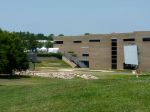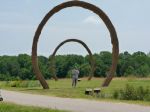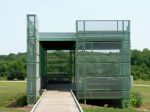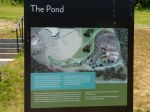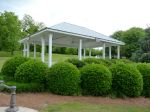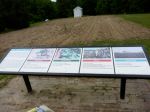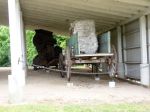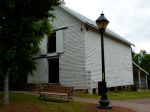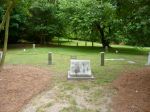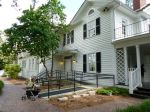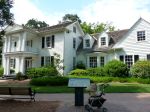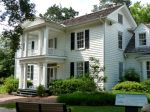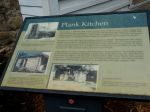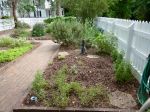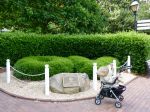 After school let out for the summer we headed with friends to Duck, NC for the weekend. The Town of Duck is located on the northern section of the Outer Banks mainland, not far (physically) from the Virginia border. We wanted to take advantage of staying in the northern Outer Banks, so we explored the Currituck Beach Lighthouse one morning.
After school let out for the summer we headed with friends to Duck, NC for the weekend. The Town of Duck is located on the northern section of the Outer Banks mainland, not far (physically) from the Virginia border. We wanted to take advantage of staying in the northern Outer Banks, so we explored the Currituck Beach Lighthouse one morning.
Ever since watching Pete’s Dragon as a child, lighthouses and light keepers always fascinated me. After reading “The Light Between Oceans” my fascination only grew stronger. Maybe I love the simplicity of their lifestyle or their strong connection to the water and ships they protect. Whatever the reason for my fascination, I’m thankful for being able to explore these historical landmarks.
History
Currituck Beach Lighthouse is located north of Duck in the historic village of Corolla, NC at 1101 Corolla Village Rd. In 1873 construction began on Currituck Beach Lighthouse to fill the gap of coastal darkness between Cape Henry Lighthouse in Virginia Beach and Bodie Island Lighthouse, just south of Nags Head, NC. It stands 162 ft tall overlooking the Currituck Sound and Atlantic Ocean. The lighthouse is unique in that they did not paint the exterior bricks. The lighthouse keepers and their families lived in the adjacent Victorian-style home until the 1930s when the U.S. Coast Guard assumed lighthouse duties. The U.S. Coast Guard automated the beacon, which continues to flash in 20-second intervals to alert ships at sea.
The lighthouse sat abandoned for decades after automating the beacon. In 1980, the non-profit Outer Banks Conservationists began to slowly restore the lighthouse over the next decade. The lighthouse opened to the public in 1990 and one of the keeper’s houses opened later as the gift shop. The main keepers’ house remains closed until restoration efforts finish.
 Climbing the Lighthouse
Climbing the Lighthouse
The base and first two landings of the lighthouse feature interesting exhibits about the lighthouse’s history. After paying the $10 admission fee and signing the waiver, I made separate trips with both girls up the winding 220 steps. Small landings between each floor offer chances to catch your breath and let others pass. We climbed slowly, but still reached the top of the lighthouse in a little over 5 minutes. We (so very carefully) walked around the outside of the lighthouse admiring the gorgeous panoramic water views.
When climbing the lighthouse stairs, small signs display in the windows letting patrons know the height and cardinal direction. The girls enjoyed learning how high up they climbed and looking out the windows. After climbing down the lighthouse we visited the museum gift shop and walked around nearby Historic Corolla Village.
Thumbs up: beautiful views, informative lighthouse museum, friendly volunteer workers
Thumbs down: nothing to report





























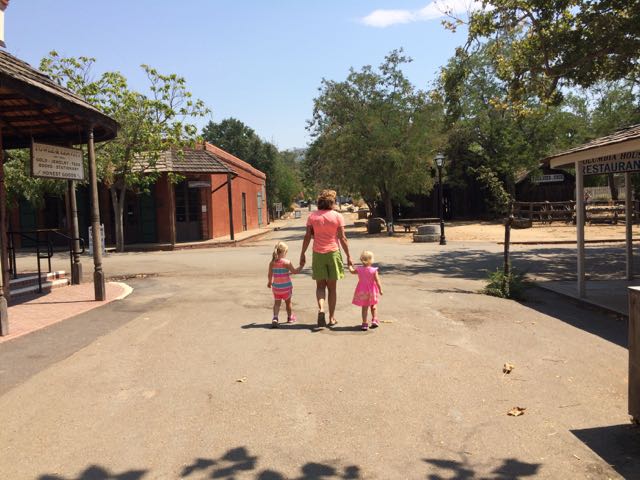 For part two of our northern California park visits we visited the Columbia State Historical Park. Columbia is a real working town that was restored to its 1850s gold-rush business district. Visitors travel back in time to the gold-rushing days where business staff dress in period clothing so visitors can experience stage coach rides, mine for gold, and much more!
For part two of our northern California park visits we visited the Columbia State Historical Park. Columbia is a real working town that was restored to its 1850s gold-rush business district. Visitors travel back in time to the gold-rushing days where business staff dress in period clothing so visitors can experience stage coach rides, mine for gold, and much more!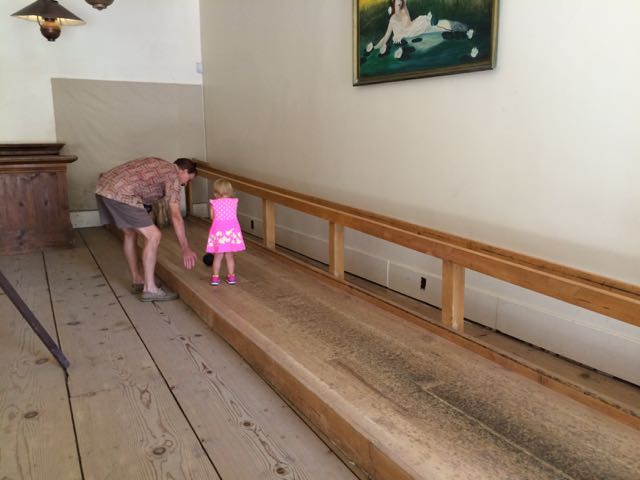 Strolling down Main Street, we first stopped at Parrott’s Blacksmith Shop to watch the workers forge iron into handmade goods. They make interesting outdoor art, decorative indoor items, horseshoes, unique furniture and more! Then we visited the museums, including the interactive old-fashioned bowling alley. The dentist office exhibit gave us lots of “eeks” as we glimpsed into some of the old fashioned tools and supplies used to clean and pull teeth.
Strolling down Main Street, we first stopped at Parrott’s Blacksmith Shop to watch the workers forge iron into handmade goods. They make interesting outdoor art, decorative indoor items, horseshoes, unique furniture and more! Then we visited the museums, including the interactive old-fashioned bowling alley. The dentist office exhibit gave us lots of “eeks” as we glimpsed into some of the old fashioned tools and supplies used to clean and pull teeth.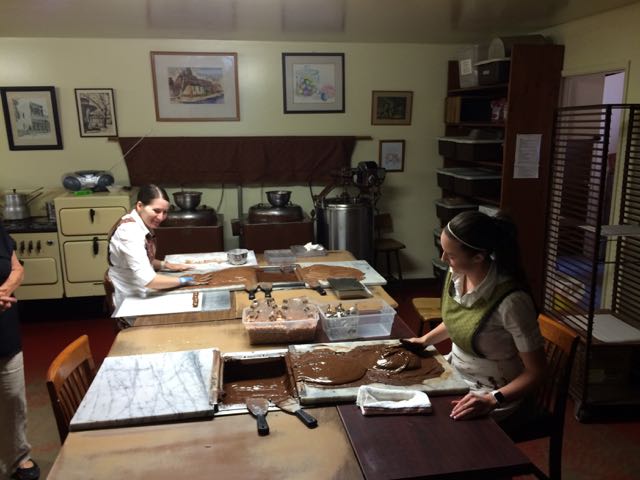 Janice showed us how they mixed and rolled the jelly candies, candy canes, and ribbon candies. The process is very exact and relies on the mechanical workings of old machines, molds, and ovens. We were so grateful for Janice’s personal tour of her beloved candy shop – it was so neat to learn about candy making and hear her personal stories about the shop. No candy store visit would be complete without buying some nibbles. The girls loved gawking at all the sparkly candies and squealed in delight while tasting the different jelly candy and chocolates. My personal favorite was the salted chocolate almonds while the girls loved the flavored jelly candies.
Janice showed us how they mixed and rolled the jelly candies, candy canes, and ribbon candies. The process is very exact and relies on the mechanical workings of old machines, molds, and ovens. We were so grateful for Janice’s personal tour of her beloved candy shop – it was so neat to learn about candy making and hear her personal stories about the shop. No candy store visit would be complete without buying some nibbles. The girls loved gawking at all the sparkly candies and squealed in delight while tasting the different jelly candy and chocolates. My personal favorite was the salted chocolate almonds while the girls loved the flavored jelly candies.



























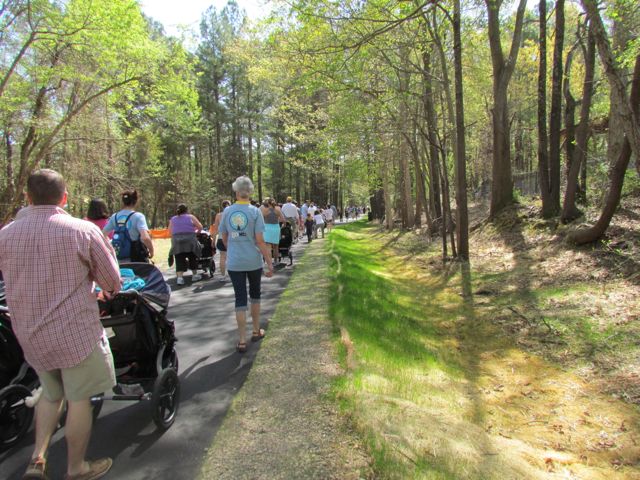 About a month ago we attended the
About a month ago we attended the 

























